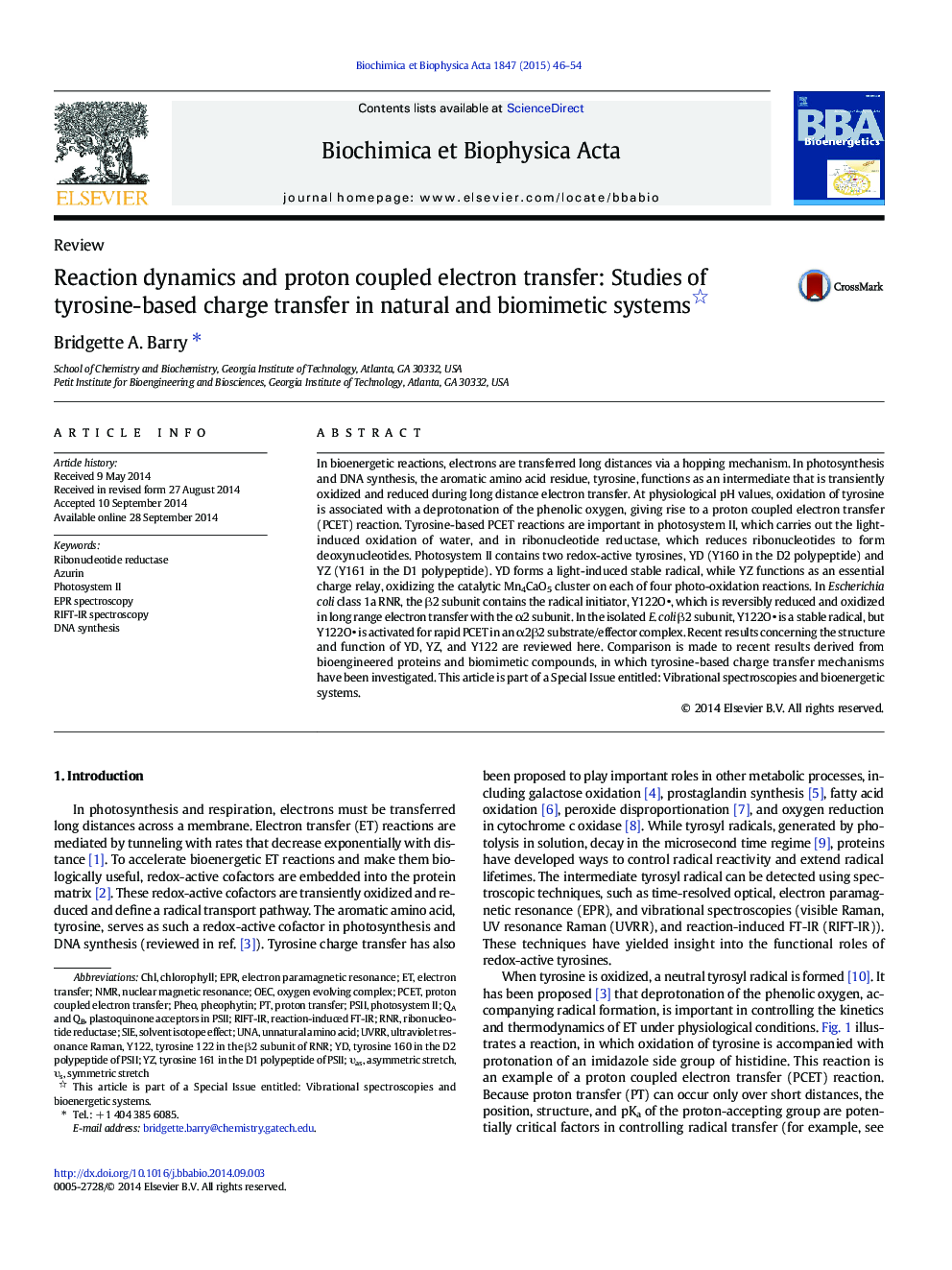| کد مقاله | کد نشریه | سال انتشار | مقاله انگلیسی | نسخه تمام متن |
|---|---|---|---|---|
| 1942143 | 1052581 | 2015 | 9 صفحه PDF | دانلود رایگان |
• Proton coupled electron transfer (PCET) occurs in photosynthesis and DNA synthesis.
• The aromatic side chain of tyrosine can serve as an intermediate in PCET.
• The use of unnatural amino acids and biomimetic compounds establishes PCET mechanism.
• A responsive protein matrix controls biological PCET reactions.
In bioenergetic reactions, electrons are transferred long distances via a hopping mechanism. In photosynthesis and DNA synthesis, the aromatic amino acid residue, tyrosine, functions as an intermediate that is transiently oxidized and reduced during long distance electron transfer. At physiological pH values, oxidation of tyrosine is associated with a deprotonation of the phenolic oxygen, giving rise to a proton coupled electron transfer (PCET) reaction. Tyrosine-based PCET reactions are important in photosystem II, which carries out the light-induced oxidation of water, and in ribonucleotide reductase, which reduces ribonucleotides to form deoxynucleotides. Photosystem II contains two redox-active tyrosines, YD (Y160 in the D2 polypeptide) and YZ (Y161 in the D1 polypeptide). YD forms a light-induced stable radical, while YZ functions as an essential charge relay, oxidizing the catalytic Mn4CaO5 cluster on each of four photo-oxidation reactions. In Escherichia coli class 1a RNR, the β2 subunit contains the radical initiator, Y122O
• , which is reversibly reduced and oxidized in long range electron transfer with the α2 subunit. In the isolated E. coli β2 subunit, Y122O
• is a stable radical, but Y122O
• is activated for rapid PCET in an α2β2 substrate/effector complex. Recent results concerning the structure and function of YD, YZ, and Y122 are reviewed here. Comparison is made to recent results derived from bioengineered proteins and biomimetic compounds, in which tyrosine-based charge transfer mechanisms have been investigated. This article is part of a Special Issue entitled: Vibrational spectroscopies and bioenergetic systems.
Figure optionsDownload high-quality image (125 K)Download as PowerPoint slide
Journal: Biochimica et Biophysica Acta (BBA) - Bioenergetics - Volume 1847, Issue 1, January 2015, Pages 46–54
